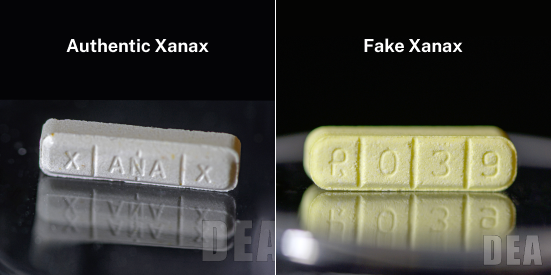Substances
Anti-Anxiety Medication Names & Identifiers: What To Know, How To Identify, and How To Help
Written By
Substances
Written By

Anxiety disorders affect millions of people, often making everyday life feel overwhelming. Fortunately, medication can play an important role in managing symptoms, especially when paired with therapy and comprehensive treatment. Here’s an up-to-date look at the most commonly used anti anxiety-medication names, and why professional guidance is essential.
| Medication Class | Examples | Key Notes |
| SSRIs | Zoloft, Prozac, Lexapro, Celexa | First-line; fewer side effects |
| SNRIs | Effexor XR, Cymbalta | Boosts mood and energy |
| Benzodiazepines | Xanax, Ativan, Klonopin | Fast-acting; high-risk of dependency |
| Buspirone | BuSpar | Low risk of dependency; takes time to work |
| Beta-Blockers | Propranolol | Helps physical symptoms, not anxiety itself |
| Other (TCAs, MAOIs, etc.) | Vistaril (hydroxyzine) etc. | Older medications; use under close supervision |
If you’ve come across a pill in a loved one’s possession and aren’t sure what it is, you’re not alone. Many anti-anxiety medications go by both brand names and generic names, and may also appear with numbers, letters, shapes, or colors that make identification confusing.
To help you better understand what you may have found, here are some of the most commonly prescribed anti-anxiety medications along with how they often appear:
| Brand Name | Generic Name | Common Pill Markings / Shapes / Colors | Notes |
| Xanax | Alprazolam | Oval or football-shaped, often white; “XANAX” and dosage (e.g., 0.25, 0.5, 1) stamped | Short-acting benzodiazepine |
| Ativan | Lorazepam | White round or oval pills, imprinted with “R” or “B” codes depending on manufacturer | Fast-acting; can cause sedation |
| Klonopin | Clonazepam | Blue or green tablets, often scored with numbers like “1”, “2” or “93” + markings | Long-lasting benzo; used for panic |
| Valium | Diazepam | Yellow or white round tablets, “V” or “10” stamped, some are 2 mg or 5 mg | Classic anti-anxiety medication |
| Lexapro | Escitalopram | White or off-white round pills, often “5”, “10”, or “20” stamped depending on dose | SSRI; fewer side effects long-term |
| Zoloft | Sertraline | Green or blue tablets; round or oval with codes like “ZLT” or “100” | One of the most prescribed SSRIs |
| Prozac | Fluoxetine | Green/white capsules, imprinted with “DISTA” and numbers like “3105” | Distinctive capsule style |
| Celexa | Citalopram | Light pink or orange tablets; may read “F” or “C” + numbers | SSRI; older cousin of Lexapro |
| Effexor XR | Venlafaxine | Capsule-shaped, grey/orange or red, imprinted with “W” or “XR” codes | SNRI; extended release format common |
| Buspar | Buspirone | Small white tablets, often with “5” or “10” and “TV” or “AN” stamps | Not sedating; low abuse risk |
| Vistaril | Hydroxyzine | Green or white capsules, imprinted with “VISTARIL” or “EP 117” | Antihistamine used for anxiety relief |
| Cymbalta | Duloxetine | Blue/green capsule-shaped pills, marked with “60” or “30” | SNRI; also used for chronic pain |
Tips for Parents or Loved Ones Identifying Unknown or Suspicious Pills:
If you’re unsure what a pill is, reach out to our team or call a local pharmacy. Never assume based on color, markings or size alone.

image from: https://www.dea.gov/onepill
Finding a pill doesn’t automatically mean misuse, but it’s an important moment to open a conversation and, if needed, consult professionals. Using identifiers alone can also lack conclusive support around what the pill contains. If you were to identify a pill, you may be mistaken of what you have actually found without professional support, as “pressed pills” on the black market are highly popular and can look identical to the pharmaceutical pills they are replicated after. Pressed pills also commonly contain other substances like Fentanyl, and are sold as Xanax.
Medication isn’t a magic bullet—it’s one tool in a holistic treatment plan. At Brooks Healing Center, we prioritize a balanced, personalized approach that includes:
If you’re concerned about your child, spouse, or loved one misusing anxiety medication, especially benzodiazepines, we’re here to help. At Brooks Healing Center, we provide:
Need help? Reach out today and our admissions team will assist in collecting an assessment, verifying insurance and finding the right care for you or your loved one.
The most commonly prescribed anti-anxiety medications include SSRIs (like Lexapro and Zoloft), SNRIs (like Cymbalta and Effexor XR), and benzodiazepines (like Xanax, Ativan, and Klonopin). Buspirone and hydroxyzine (Vistaril) are also widely used for generalized anxiety.
Benzodiazepines are generally prescribed for short-term use only due to the risk of dependence, tolerance, and withdrawal symptoms. Long-term use is discouraged unless monitored closely by a physician, and tapering off should always be done under medical supervision.
Most effective anxiety treatments require prescriptions. While some over-the-counter supplements or antihistamines (like hydroxyzine) may offer short-term relief, they should not be used as substitutes for professional treatment.
Mixing alcohol with most anti-anxiety medications, especially benzodiazepines, is dangerous and can lead to sedation, overdose, or fatal respiratory depression. It can also make antidepressants like SSRIs less effective or worsen side effects.
You should contact a pharmacist to confirm and identify the medication & safe disposal. If you suspect misuse, you can reach out to our team at Brooks Healing Center to assist.